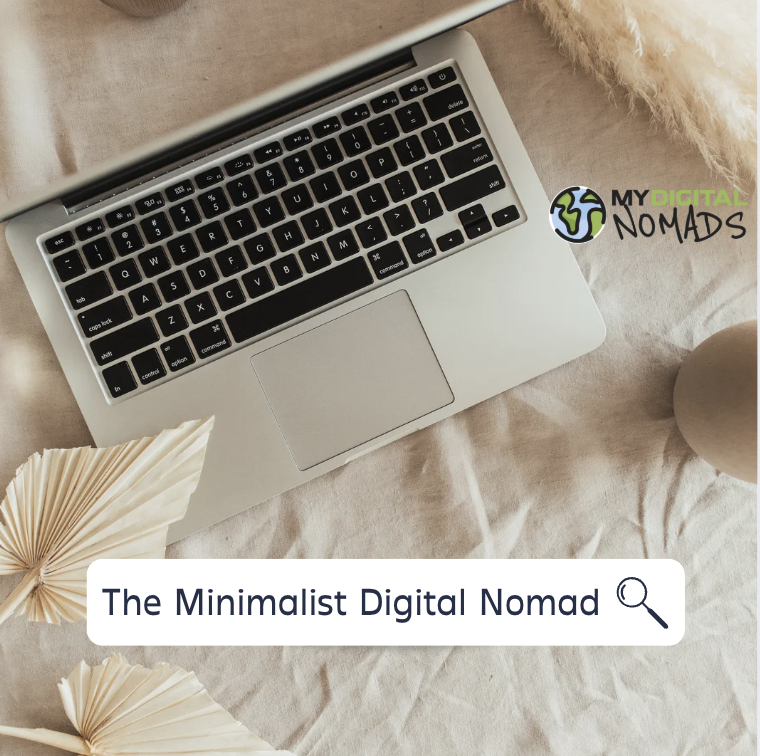Minimalism has gained popularity as a lifestyle choice, and for digital nomads, it’s more than just an aesthetic—it’s a practical approach to working and traveling with fewer burdens. By focusing on essentials, streamlining workflows, and decluttering both physically and digitally, minimalists can enjoy a simpler, more productive work life. In this guide, we’ll explore the benefits of minimalism for digital nomads and offer practical tips for achieving more with less.
1. Why Minimalism Matters for Digital Nomads
Minimalism is not about deprivation—it’s about prioritizing what truly adds value to your life. For digital nomads, traveling light and focusing on essential tools can reduce stress, save money, and enhance flexibility. A clutter-free environment helps maintain focus, while fewer possessions make relocating easier and less time-consuming.
Living and working minimally also encourages intentionality. By choosing high-quality, multi-functional tools instead of carrying excess gear, digital nomads can work more efficiently and adapt quickly to new environments. Minimalism supports sustainability, too—buying less reduces waste and environmental impact, aligning with eco-conscious travel habits.
Pro Tip: Regularly audit your workspace and belongings to remove unnecessary items. Ask yourself: does this item add value to my work or well-being?
2. Essential Tech Gear for Minimalist Nomads
A minimalist digital nomad’s tech stack should be lightweight, reliable, and multi-purpose. Investing in high-performance devices reduces the need for backups and redundant gadgets.
- Laptop: Choose lightweight, high-performance laptops like the MacBook Air M2 or Dell XPS 13, which balance power and portability.
- External Storage: Use compact SSDs like the Samsung T7 for backups and file transfers.
- Noise-Canceling Headphones: Models like the Sony WH-1000XM5 ensure focus in busy environments.
- Portable Wi-Fi Hotspot: Devices like Skyroam Solis Lite provide internet access in remote areas.
- Power Bank: A high-capacity charger like the Anker PowerCore 26800mAh ensures your devices stay powered.
Pro Tip: Opt for devices with USB-C compatibility to minimize cables and chargers.
3. Organizing Your Digital Workspace
A minimalist approach isn’t limited to physical possessions—it extends to your digital workspace. Streamlining files, emails, and tools can improve productivity and reduce overwhelm.
- Cloud Storage: Use platforms like Google Drive and Dropbox for secure, easy access to files from anywhere.
- Task Management: Tools like Asana and Trello keep workflows organized without clutter.
- Password Management: Services like 1Password simplify login management and boost security.
- Digital Note-Taking: Apps like Notion and Evernote help organize ideas and project notes.
Pro Tip: Use automation tools like Zapier to streamline repetitive tasks and integrate apps.
4. Packing Light: A Minimalist’s Travel Guide
Packing light is a skill that pays off when transitioning between locations. Focus on versatile, high-quality clothing and compact travel accessories.
- Capsule Wardrobe: Choose neutral colors and multi-functional clothing to maximize outfit combinations.
- Compression Packing Cubes: Products like Eagle Creek’s Pack-It Cubes keep clothes organized and compact.
- Multi-Use Travel Gear: Items like the Nomatic Backpack double as carry-ons and daypacks.
- Toiletries: Invest in reusable, travel-sized containers and solid toiletries to save space and avoid spills.
Pro Tip: Stick to the “one-bag rule.” If it doesn’t fit in your main carry-on, reconsider its necessity.
5. Simplify Your Workflows and Processes
Minimalism isn’t just about objects—it’s about simplifying processes. Focus on workflows that streamline your tasks and eliminate inefficiencies.
- Automate Repetitive Tasks: Tools like Zapier and IFTTT can automate emails, data entries, and reminders.
- Batch Tasks: Group similar tasks, like emails or content creation, to improve efficiency.
- Focus Tools: Apps like Focus@Will and Serene help maintain concentration during work hours.
Pro Tip: Create templates for emails, proposals, and invoices to save time and maintain consistency.
6. Balancing Minimalism with Productivity
Minimalism doesn’t mean sacrificing productivity. Instead, it’s about creating a focused work environment that supports your goals without distractions.
- Ergonomic Setup: Use foldable laptop stands and portable keyboards for comfort.
- Time Management Tools: Apps like Toggl Track monitor time spent on tasks, keeping productivity on track.
- Break Reminders: Tools like Pomodoro Timers encourage breaks to avoid burnout.
Pro Tip: Designate a work zone, even if you’re in a small space, to mentally separate work and relaxation.
7. The Mental Benefits of Minimalism
Minimalism can improve focus, reduce stress, and increase clarity. Without the distraction of excess possessions or digital clutter, your mind is free to concentrate on work and creative projects.
Studies show that tidy environments lead to better productivity and lower stress levels. By embracing minimalism, digital nomads can create an intentional lifestyle that supports well-being and career success.
Pro Tip: Incorporate mindfulness practices, like journaling or meditation, into your daily routine to reinforce mental clarity.
Final Thoughts: Thrive with Less
Minimalism offers digital nomads a pathway to simplicity, flexibility, and efficiency. By carefully curating your tools, organizing your workspace, and streamlining your workflows, you can stay focused and productive without being weighed down by clutter.
Embracing minimalism is not about sacrificing comfort—it’s about gaining freedom. With fewer distractions, you can focus on meaningful work, explore new opportunities, and truly enjoy the nomadic lifestyle.

